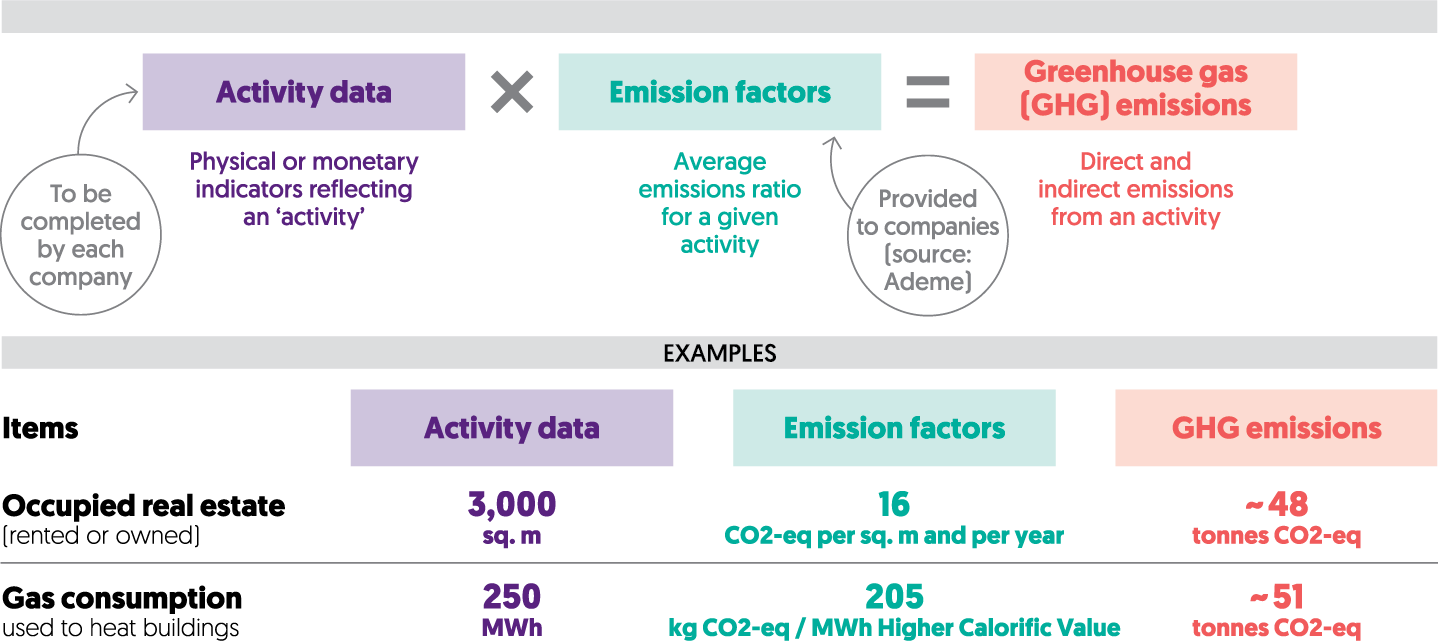3 - Groupe BPCE is continuing to reduce its own environmental footprint
In its new 2021-2024 strategic plan, Groupe BPCE has set itself the target of reducing its own carbon footprint (in terms of the company’s day-to-day operations) by 15% (compared with the benchmark year of 2019) within three years.
In order to track the successful pursuit of the steps decided, Groupe BPCE has been using since 2011 a tool specifically designed to obtain an overview of its own greenhouse gas (GHG) emissions using a methodology compatible with the one adopted by the French Environment and Energy Management Agency (Ademe), the ISO 14064 standard and the Greenhouse Gas Protocol.
This tool enables the Group to estimate the GHG emissions from the activities of its branch networks and corporate headquarter building. This approach also makes it possible to use emission factors to convert data about business activities into an estimated volume of emissions, expressed as CO2 equivalent. The quantification of GHG emissions chiefly consists in completing a diagnosis of physical flows and applying the corresponding emission factors to each type of flow.
Emission factors are ratios that enable us to estimate the amount of greenhouse gases emitted according to the data sample from each activity. These emission factors are updated annually to ensure they remain consistent with the extraction of data from the carbon database maintained by Ademe 4.
For example:
- The electricity emission factor (expressed as kg CO2-eq/kWh) is used to calculate the amount of GHGs emitted by each kWh of electricity consumed.
- The paper emission factor (expressed as kg CO2-eq/metric ton of paper) is used to calculate the amount of GHG emitted for each metric ton of paper consumed.
This methodology provides:
- An estimate of greenhouse gas emissions per company,
- A map of these emissions per item (energy, purchases of goods and services, movement of people, fixed assets, waste and freight) and per scope 5.
This carbon review (or Bilan Carbone®) enables the Group to know both the level and trend of its CO2 emissions on an annual basis and to draw up its emissions reduction plan accordingly.
4. The majority of the emission factors are taken from the Ademe emission factor database.
5. The majority of the emission factors are taken from the Ademe emission factor database.
The GHG Protocol divides the operational scope of an entity’s GHG emissions as follows:
- Scope 1: sum of direct emissions induced by the combustion of fossil fuels (oil, gas, coal, peat, etc.) from resources owned or controlled by the company.
- Scope 2: sum of indirect emissions induced by the purchase or production of electricity.
- Scope 3: sum of all other indirect emissions (from the supply chain, extended to include the transport of goods and people)
Transformation of business data (sq. m, liters, €, etc.) into CO2 emissions

This diagram shows the transformation of business data (sq.m, liters, €, etc.) into CO2 emissions.
Principles underlying the calculation
Activity data (to be completed by each company)
(Physical or monetary indicators reflecting an activity)
multiplied to
Emission factors
(Average emissions ratio for a given activity) which are provided to companies [source: Ademe],
results in
Greenhouse Gas (GHG) emissions.
(Direct and indirect emissions from an activity)
| EXAMPLES | |||
|---|---|---|---|
| Items | Activity data | Emission factors | GHG emissions |
| Occupied real estate (rented or owned) |
3000 sq.m |
16 CO2-eq per sq. m and per year |
~48 tonnes CO2-eq |
| Gas consumption used to heat buildings |
250 MWh |
205 kg CO2-eq / MWh Higher Calorific Value |
~51 tonnes CO2-eq |
